
Colombia: Feeding the addiction
The Americas
Chapter 22
A new country, a new continent. After seven months in Mexico and Central America we were keen, perhaps slightly desperate, for some mountain therapy. No problem here, with the Andes, the worlds longest continental mountain range, commencing their 7000 km march south along the western edge of South America.
And with a new country comes a whole range of new experiences. The most immediate is the food, and the first days are filled with exploratory forays as we apply the trial and error method to determine our diet for the next month or so…
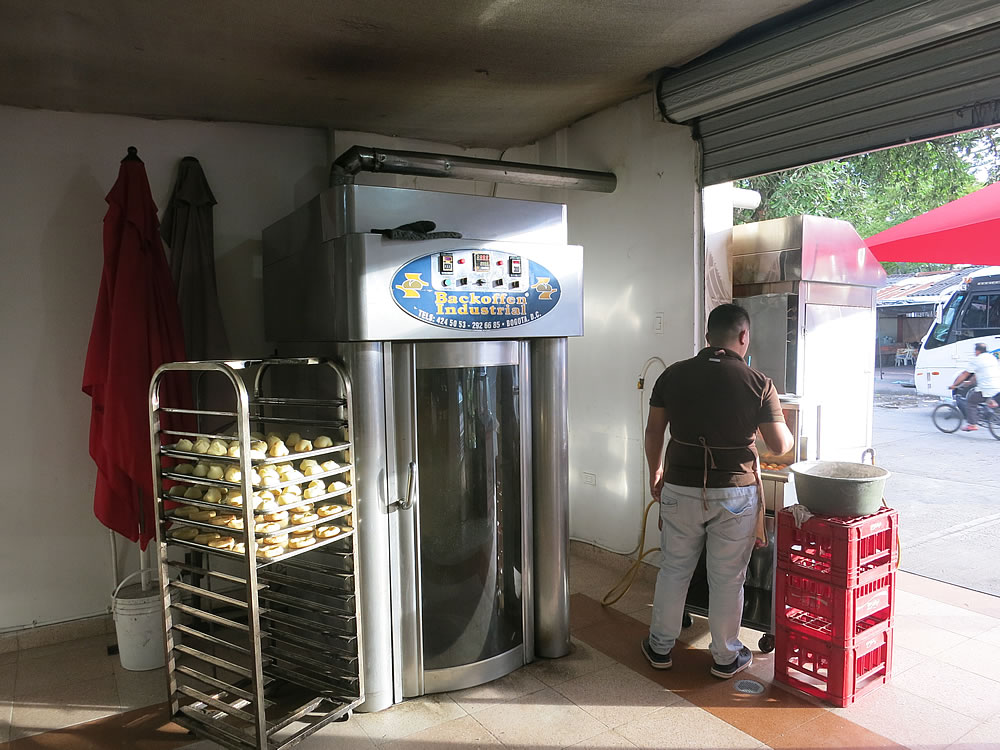

And so we headed off, Ed summing up our first day on the road as ‘this is the friendliest ride I’ve ever done!’ Perhaps it was the holiday feel as we were swept up amongst dozens and dozens of cyclists … couples, big bunches, riders out motorpacing, mountainbikers, and locals ambling along. We were waved in to join a group for a drink at the top of one climb, flagged down by a couple who just wanted to say hi and take photos, and received countless waves, honks and shouts of encouragement.
Colombians are REALLY friendly. Stay a night in a small hotel and you’ll be farewelled with coffee, handshakes, hugs and a photo session. Our (bad) Spanish is getting a real workout as everywhere we stop we get to explain our journey, jobs, marital status and family situation. The bike trailers attract a lot of attention here and I’ve often given a quick demo of the attachment system when we’ve stopped for a break and an audience has gathered for a closer look.
Leaving Medellin we took a route that winds through the mountains and a series of small towns south to Manizales. Turning off on to dirt roads we climbed through steep emerald green farmlands, passing small dairy landholdings – typically just a dozen or so cows.


We quickly settled in to a routine of ascending to each ridge-top town, plummeting down to cross a river, then commencing the next climb. And repeat.
Colombia is a major supporter of the worlds caffeine addiction with an average annual production of 11.5 million bags of coffee beans. Cycling through the coffee region we noticed that coffee plantations often included lines of banana trees separating the plots of coffee bushes.
The city of Manizales was a bit of a shock after the peace of previous days and we quickly moved on towards Los Nevados National Park. The road into the park was clearly popular with local mountainbikers …
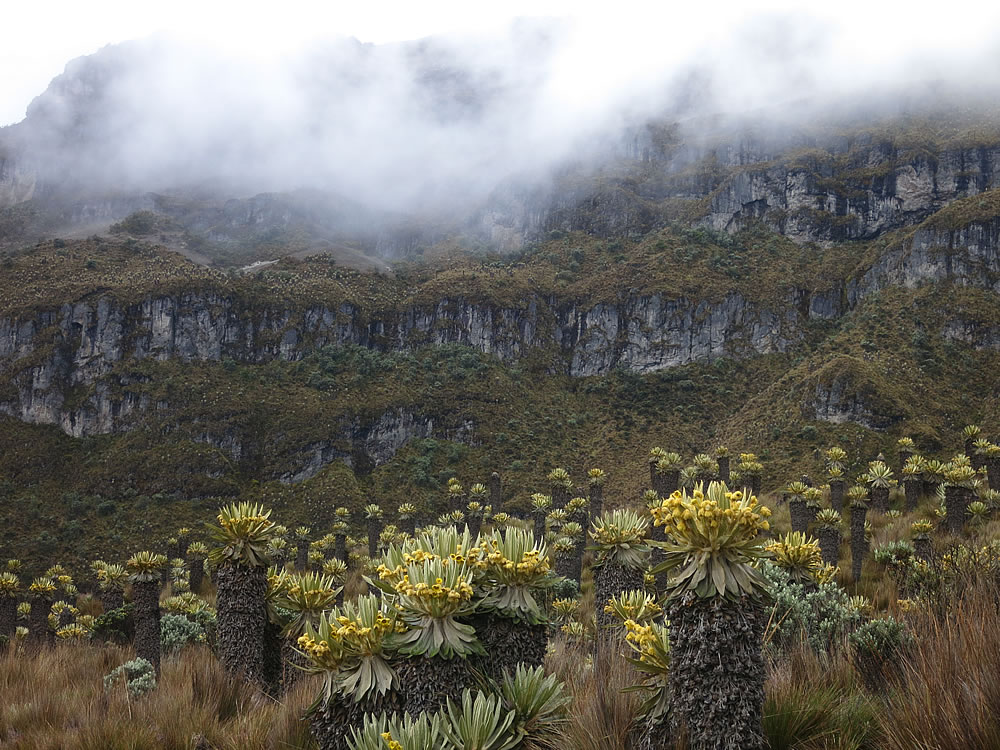
Bouncing our way back down into farmland we arrived in the tranquilo village of Murillo for the night, enchanted by its buildings brightly painted in vertical stripes, and the ever-changing variety of ponchos and hats …
As we descended from Murillo we diverted to see the remains of Armero. When Nevado del Ruiz erupted on November 13th 1985, the town was engulfed by mudslides (lahars) triggered when volcanic material melted the mountain’s glaciers, creating a torrent of debris that killed over 20,000 of the town’s 29,000 inhabitants. The tragedy is widely thought to have been avoidable, with forecast warnings ignored and communications impaired by a severe storm. Many residents stayed in their homes as instructed, and were unaware of the impending disaster.
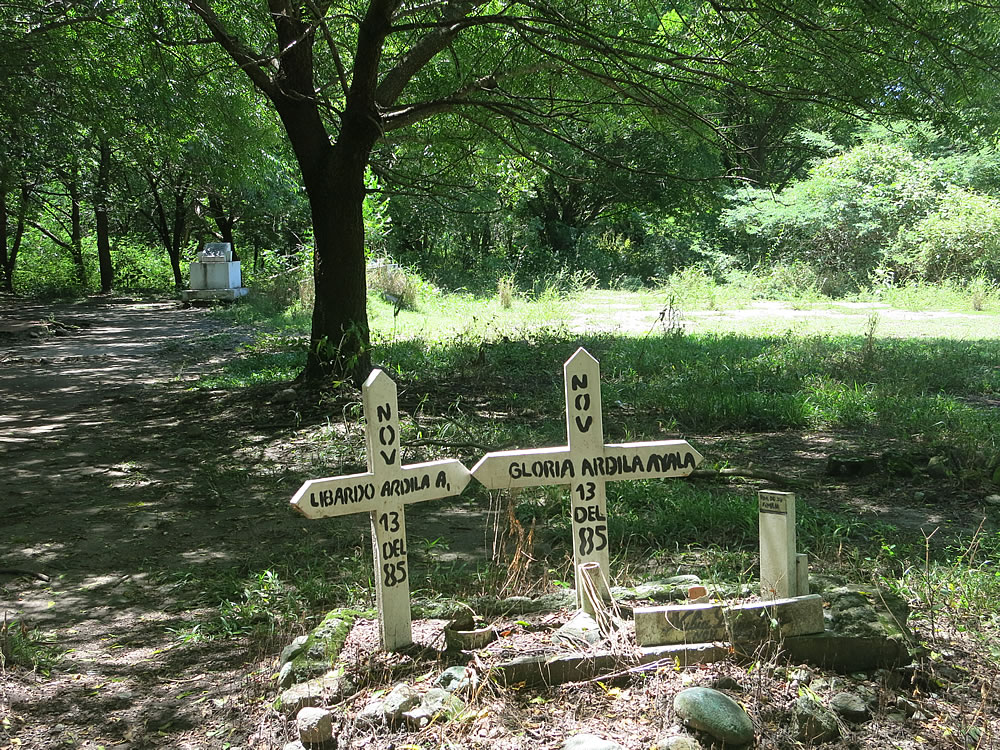
The temperature rose as we descended, making our way south and towards the Desierto de Tatacoa. This is a bit of an oddity in a country so close to the Equator and something of a tourist attraction for Colombianos.
Leaving the Tatacoa Desert we made a quick dash down the main road to reach San Agustin, famous for the pre-Colombian archeological sites near the town. Figures and tombs carved from volcanic rock are evidence of an ancient culture, but little is known of their significance. Sites include numerous artificial mounds, terraces, funerary structures and stone statuary – indicating that these were ceremonial places of pilgrimage and ancestor worship.
Leaving San Agustin we headed to Mocoa and the start of Colombia’s notorious Death Road – ‘El Trampolin de la Muerte’. Heavy rainfall and flash flooding earlier this year caused widespread damage and killed over 330 people when mudflows inundated riverside neighbourhoods around Mocoa, with the destruction obvious a few months later.


After descending to the sealed road at San Francisco it was easy to think that the worst was over … not so, as the road reared upwards at particularly cruel gradients to yet another pass.

After a brief stop off in Pasto to stock up on brake pads we made our weary way towards the border… detouring to visit the spectacular basilica church across the canyon at Las Lajas. The church is built against a rock wall, which was where a woman and her deaf/mute daughter heard and saw an apparition of the Virgin Mary in 1754. Since then it has become a popular pilgrimage site with a series of shrines eventually replaced by the present church constructed between 1916 and 1949.
With one eye on the calendar, it’s off to Ecuador. We plan to follow a recently created dirt road route across the country – the Trans Ecuador Mountain Bike Route (TEMBR), but need to keep moving so we don’t miss the limited weather window for riding in the Peruvian Cordillera Blanca further south …
Until next time,
Rubber side down
Ed & Gaye
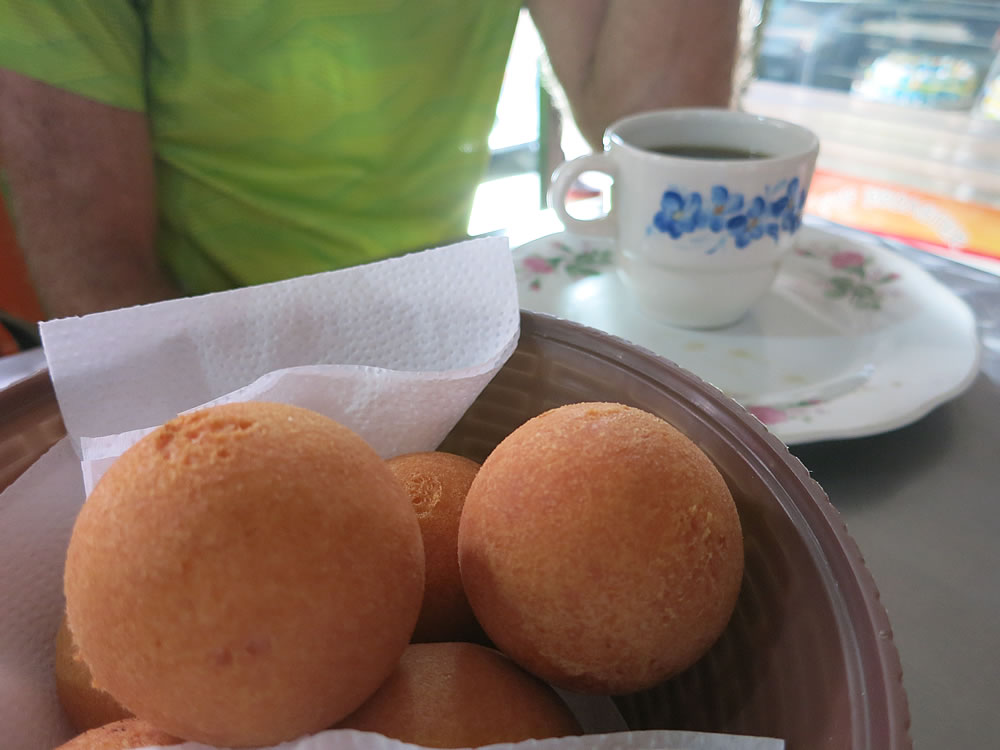
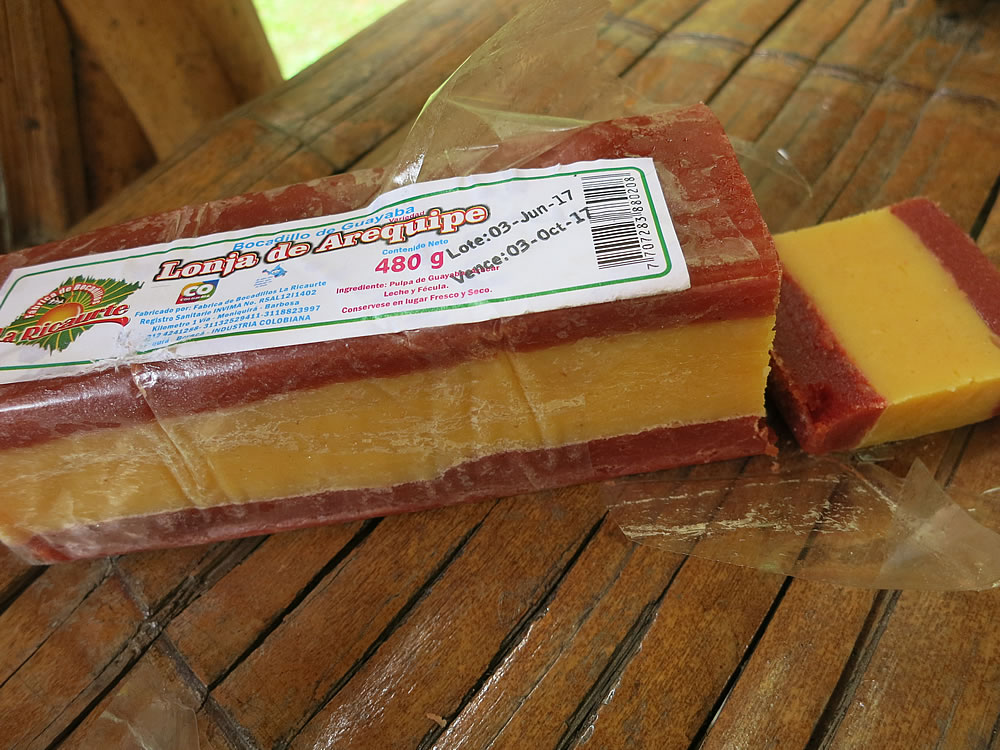




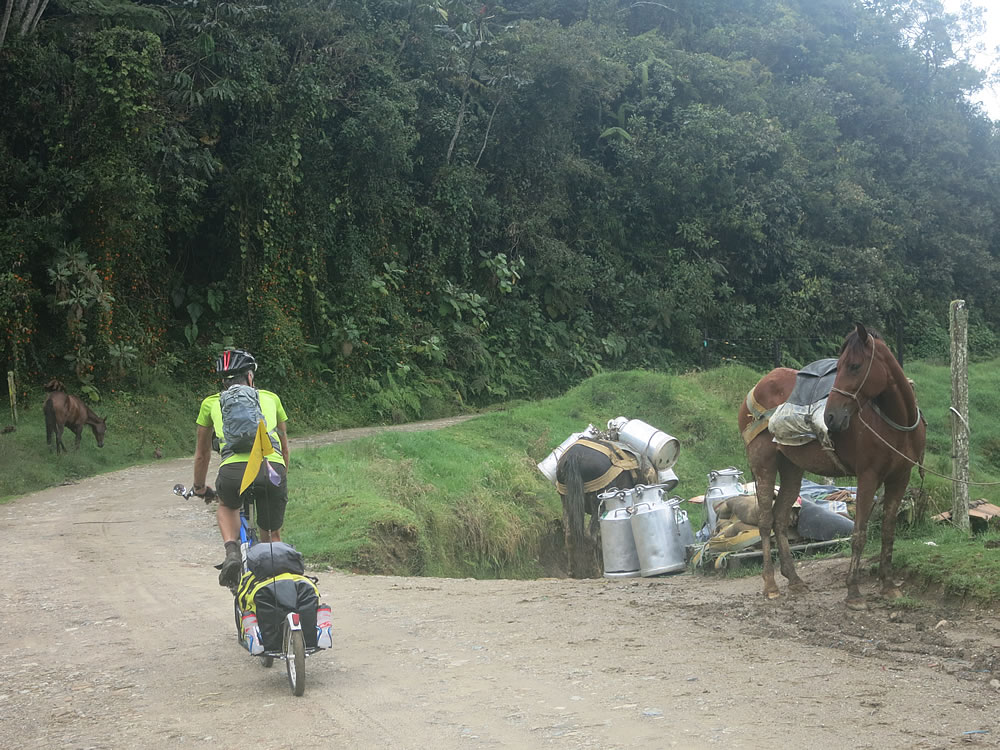





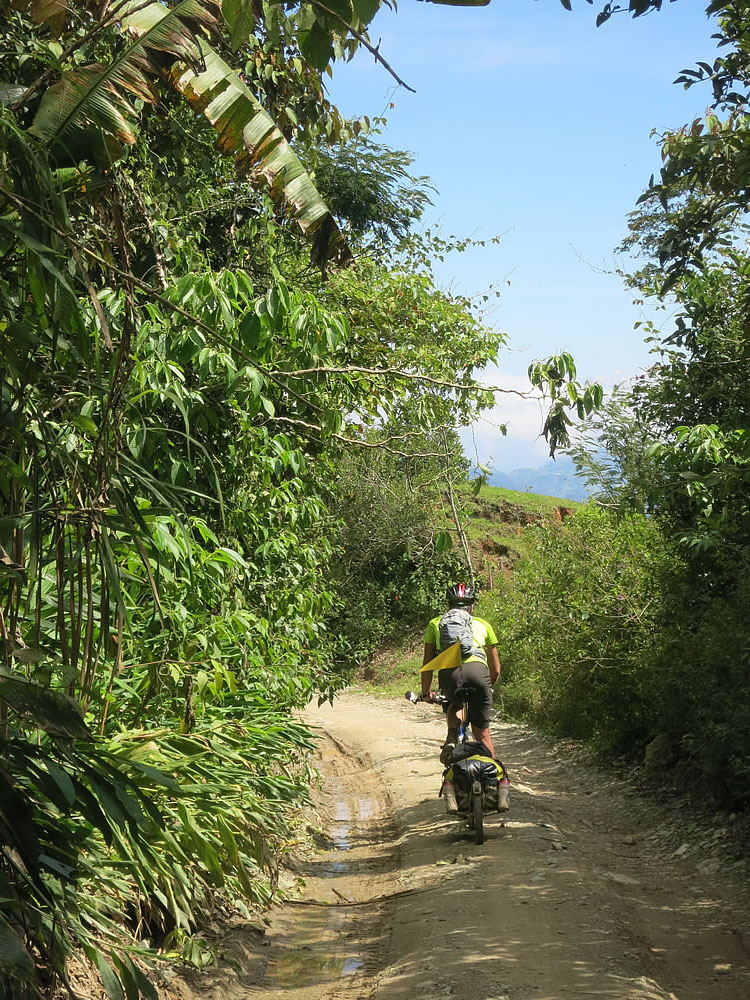
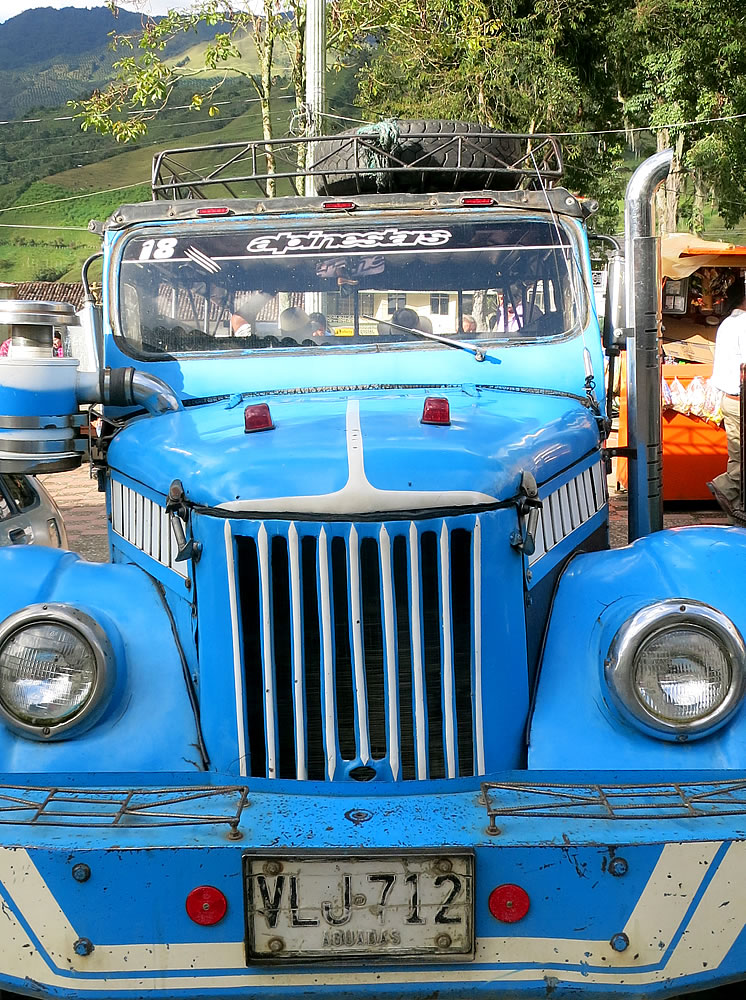







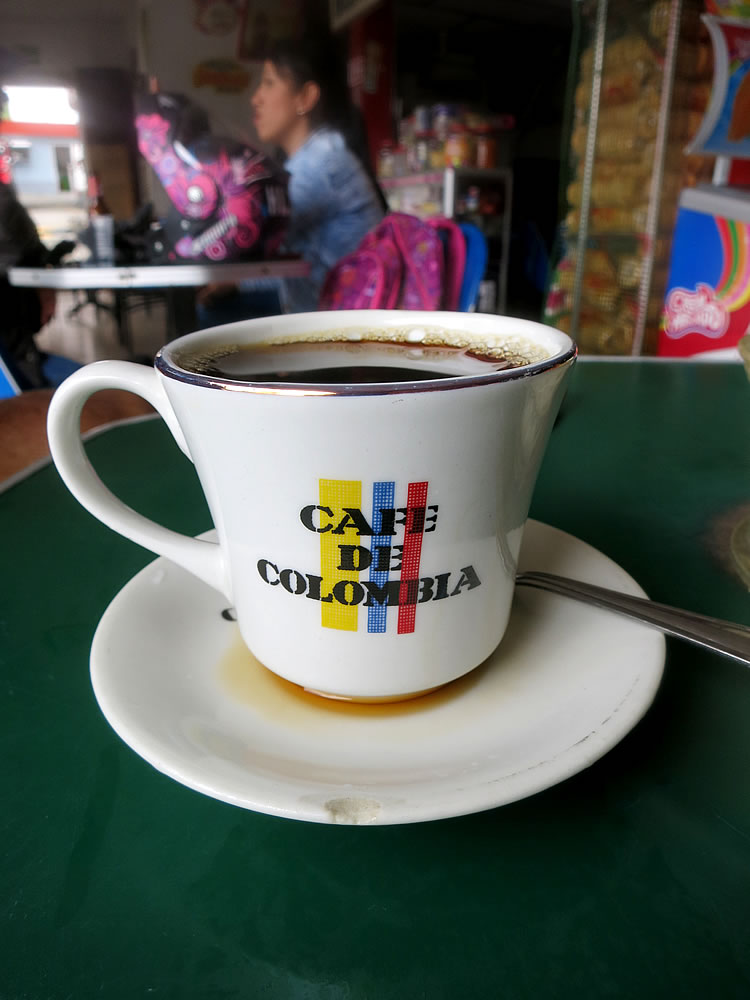
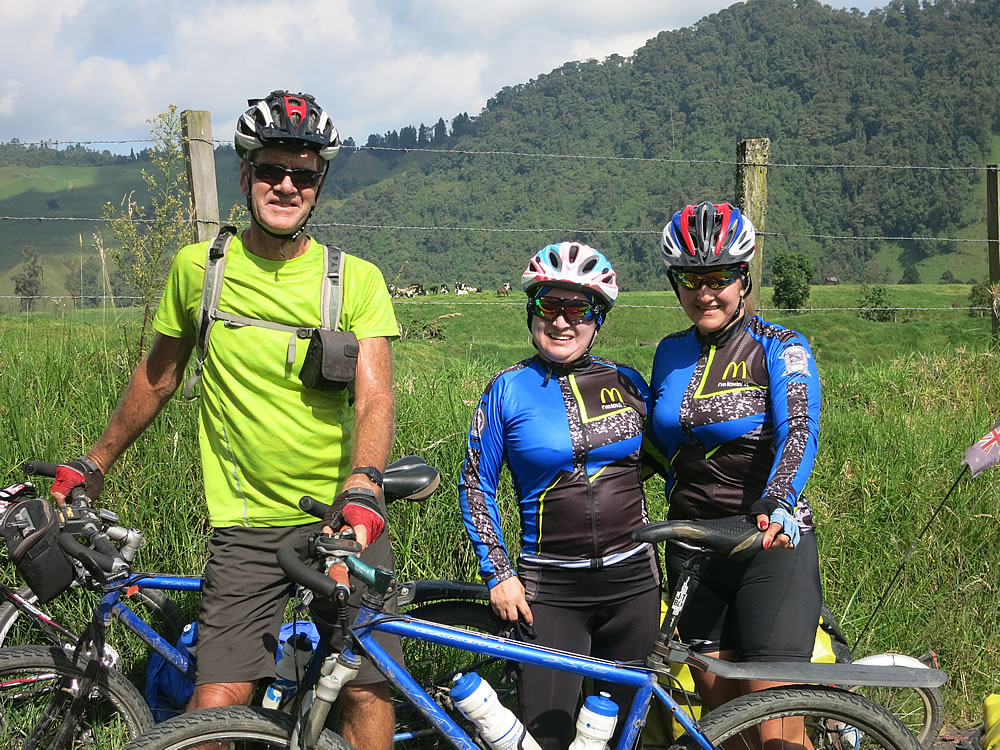


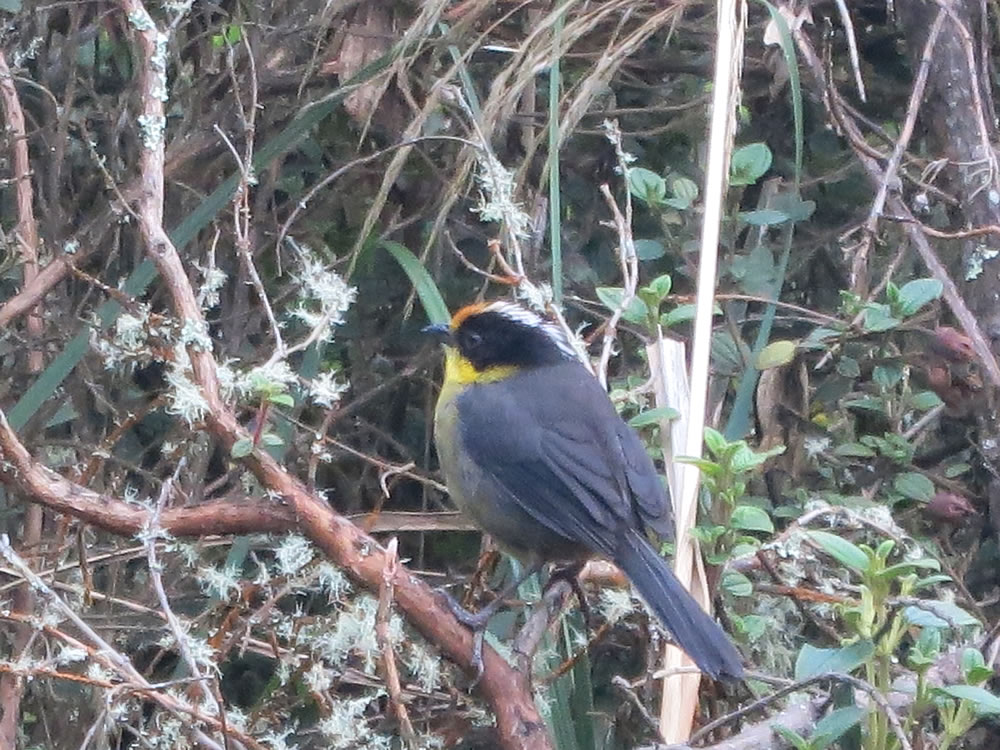


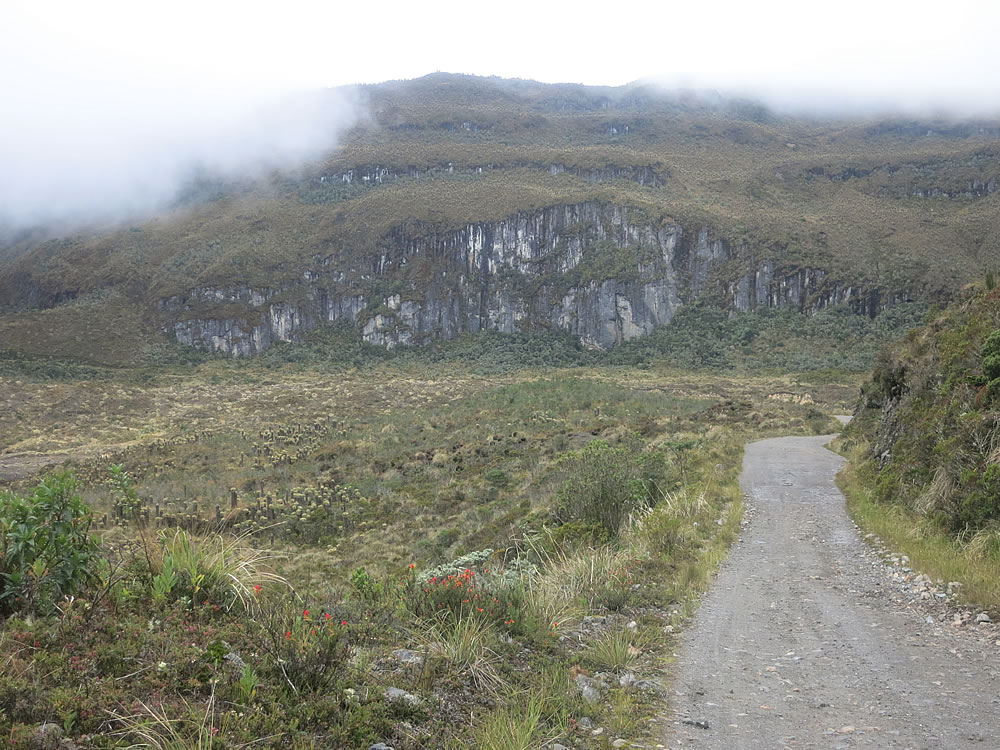











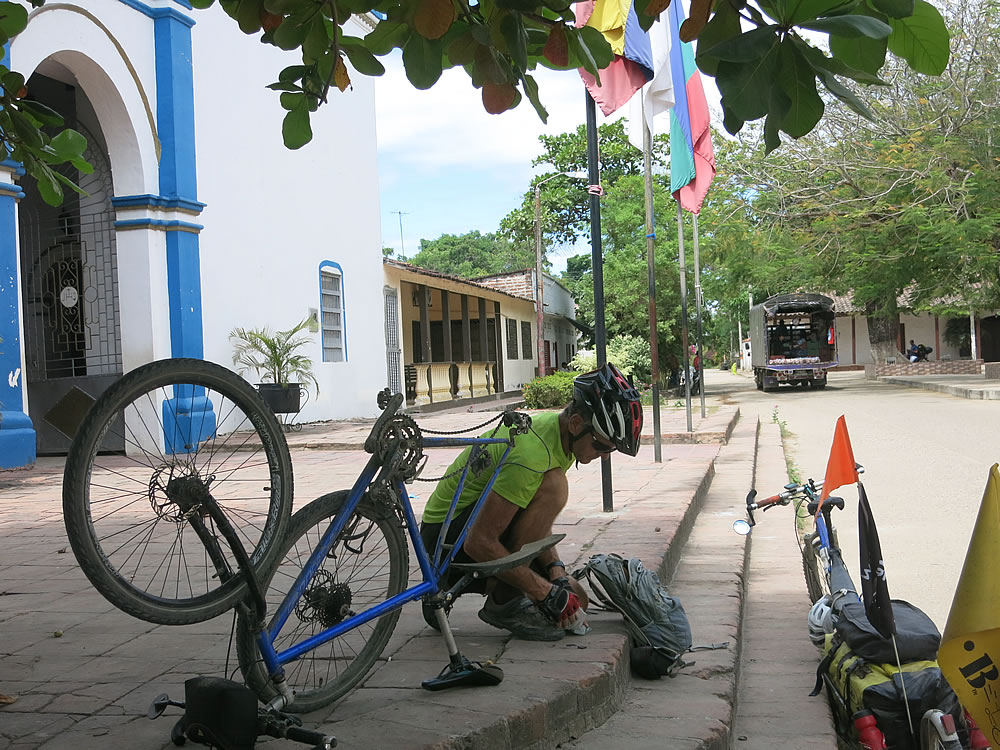






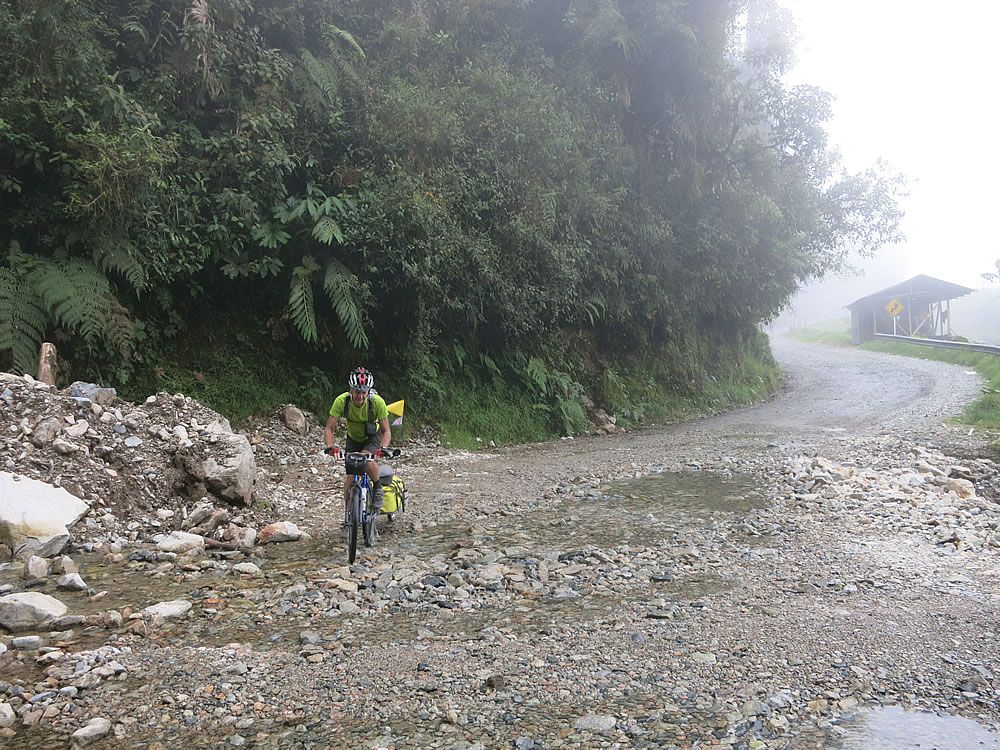
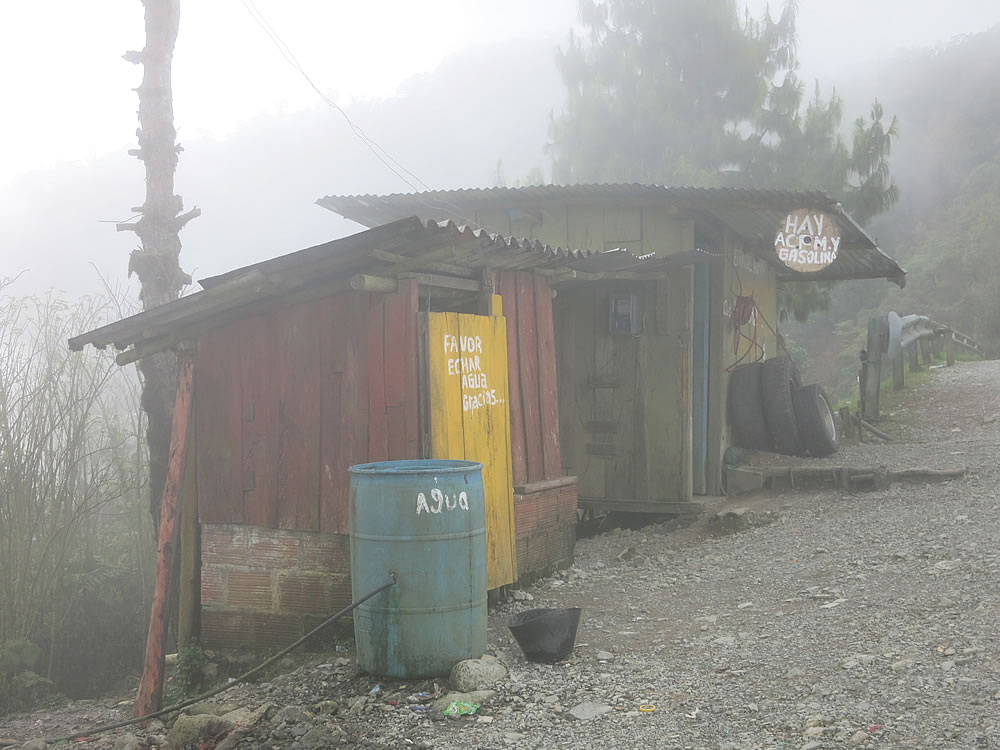


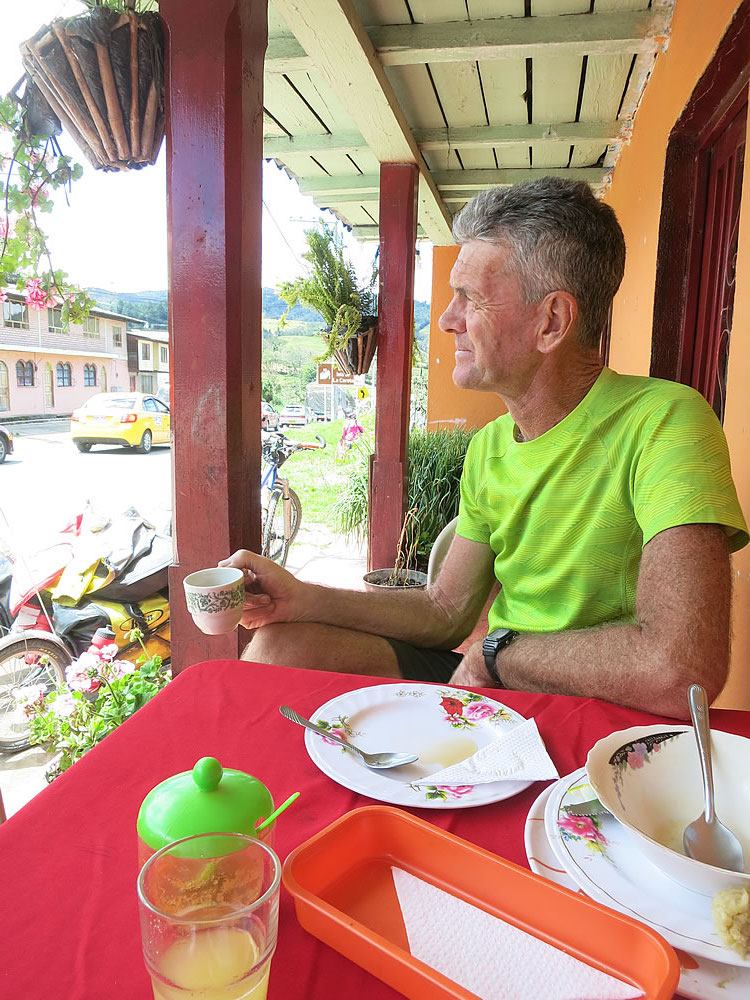


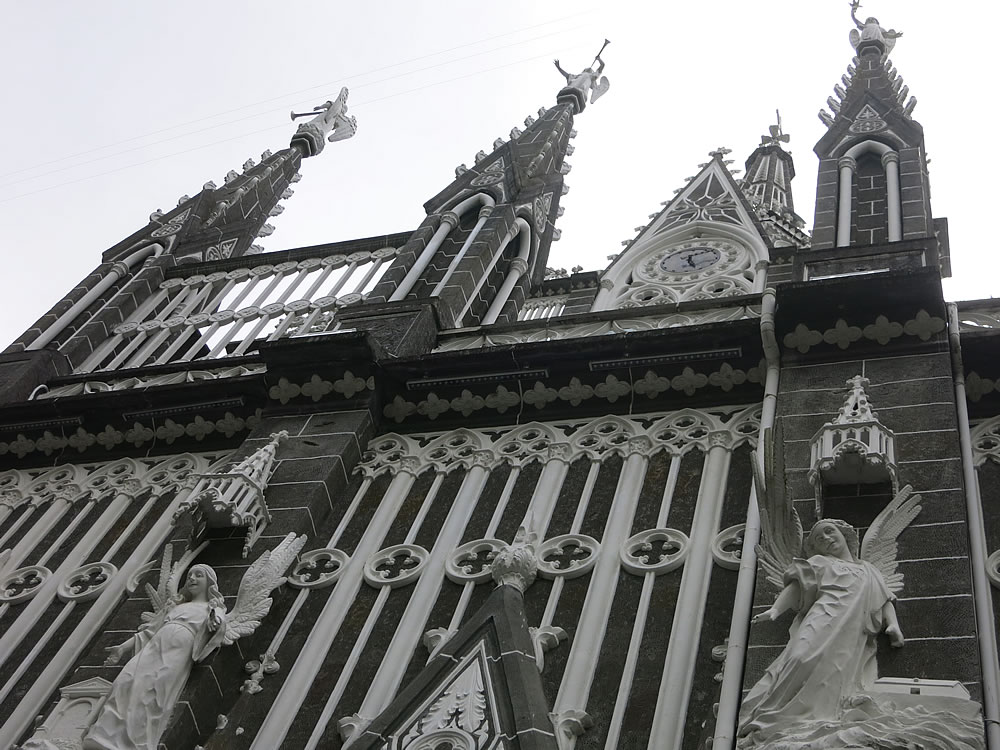


Oh my goodness do you ever have my interest piqued to go see Columbia. Our cruising friends all loved it when they went by boat but most never did Inland trips.
As always thanks for the great updates. What an incredible adventure. Love watching from the sidelines. Cheers
Hi Debbie, Colombia was a pleasant surprise, especially after reading the Australian govt travel warning which is pretty negative. The people were lovely & it is a very easy place to travel, we would definitely recommend it.
Oh no. I was hoping to live vicariously through hearing about how you just managed to get out alive through the middle of a drug war. Shows you what you get from reading the Department of Foreign Affairs website. Did you meet Nairo Quintana’s mum? Sou da great. Hell, you could almost have talked me into getting off my butt and coming along.
Enjoy Ecuador
Nairo’s Mum is under police protection after his disappointing TdF … apparently he fuels his rides with panela (dried sugarcane juice) but it doesn’t seem to work for our climbing legs?!
As usual, great photos and commentary! Loved the Colombian coffee machine. It is definitely a cycling crazy country as I watched Miguel Angel Lopez win yesterday’s stage of La Vuelta! Looking forward to your report from Ecuador ????